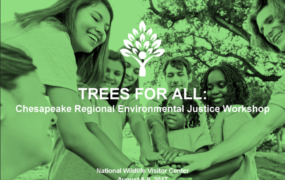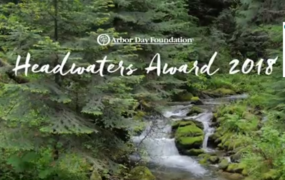 Arbor Day season is here! Over the past year, the Arbor Day Foundation’s Tree City USA program has been celebrating its 40th anniversary. Started in 1976, the Tree City program provides direction, assistance, and national recognition to communities to help ensure successful implementation of tree canopy goals.
Arbor Day season is here! Over the past year, the Arbor Day Foundation’s Tree City USA program has been celebrating its 40th anniversary. Started in 1976, the Tree City program provides direction, assistance, and national recognition to communities to help ensure successful implementation of tree canopy goals.
Tree City USA is sponsored by the Arbor Day Foundation, in partnership with the U.S. Forest Service and National Association of State Foresters. By becoming a Tree City USA, communities ensure that their trees will benefit their community in many ways including reduced energy costs, increased property values, stronger ties to neighborhoods and communities, increased community pride, and a gain in publicity.
Nationwide, over 3,400 towns have received their Tree City USA recognition and take pride in this distinction. In the Chesapeake Bay Watershed, there were over 130 recognized towns and cities recognized by this program last year in 2016.![]()

A modest investment in community trees has a big payback. Studies show that for every dollar invested, there is often a four or five dollar annual return in environmental services. Research has consistently shown the positive impact trees have on people: increased worker satisfaction, students’ improved ability to concentrate, faster healing time for hospital patients, and lower blood pressure among senior citizens. Their presence has even been found to reduce crime, providing inviting places that promote positive social interaction.
Applying for the Tree City USA award is easy and the recognition is outstanding. An incorporated municipality of any size can qualify by meeting four fundamental standards:
- A tree board or department. The formation of a tree board or department often stems from a group of citizens. In some cases a mayor or city officials have started the process. Either way, the benefits are immense. Involving residents and business owners creates wide awareness of what trees do for the community and provides broad support for better tree care.
- A tree care ordinance. City ordinances reflect the values of a community. A public tree care ordinance encourages beautification, air cooling and purification, noise abatement, property value enhancement, and all the other attributes of trees in cities of all sizes. It also enables city government to prevent and control destructive insects and diseases, avoid unnecessary costs and liability from hazardous trees and tree related accidents, and protect residents from unscrupulous or careless operators.
- A community forestry program with an annual budget of at least $2 per capita. Most communities probably already spend at least $2 per capita. Also, community trees — when cared for — can actually save money. A managed program can ensure benefits that surely outweigh costs. It does require dollars to plant and keep trees in healthy condition, but this should not be a barrier to becoming a Tree City USA.
- An Arbor Day proclamation and observance. The importance of this tree planting holiday provides an excellent opportunity to educate about trees and tree care. It also creates pride within the community and can help garner public support for the city’s entire urban forestry program.

To see a complete list of Tree City communities within the Chesapeake Bay watershed that were recognized in 2016, click here.
For more information, visit: www.arborday.org/TreeCityUSA
Story by Amy Handen and Katherine Wares





